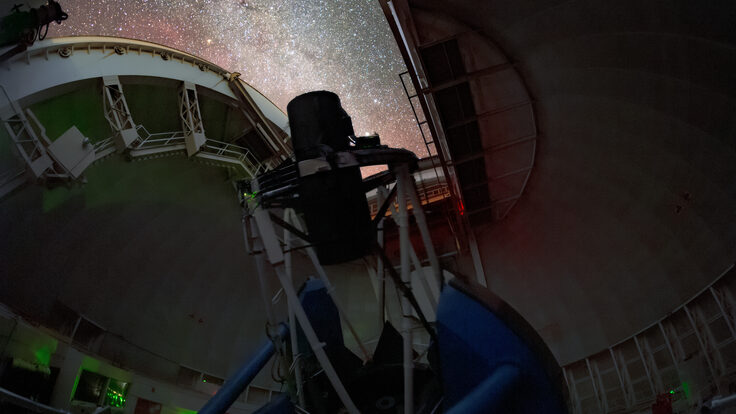Day in the life: The versatile Mr. Freeze
Some days Jerry Zimmerman calmly follows his typical morning routine and joins countless other suburbanites on the road to work. Then there are the other days. Those days Zimmerman takes on an alter-persona.
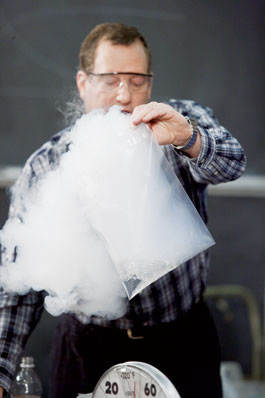 |
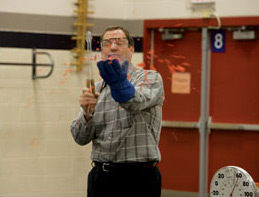 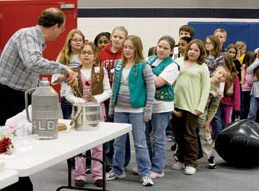 |
He wakes up early: a little anxious, a little excited. His energy builds as he prepares for the day, mentally checking off his supplies and reviewing scenarios of the questions soon to pepper him. His mind drifts to freezing fog, explosions shooting a ball 16 stories high, and children gasping in awe. A mischievous twinkle enters his eye, his step bounces, and he starts talking fast.
The studious physicist and computer expert has morphed into a charismatic showman: the third incarnation of Mr. Freeze.
Ask residents of the Fox Valley outside Chicago about Fermi National Accelerator Laboratory and most will utter a vague description, or nothing at all. But mention Mr. Freeze and adults and children alike break into grins and descriptions of their favorite science experiments. He makes the cryogenics of high-energy particle physics accessible and, well, cool.
Im excited about science, and this allows me to use that excitement for a good purpose, says Zimmerman, who switched from occasionally performing loud, messy science experiments for families to performances once or twice a month for schools and scout troops after the previous Mr. Freeze retired 12 years ago.
Cryogenics is the study of how materials behave at temperatures near absolute zero. In high-energy particle accelerators, such frigid temperatures reduce the electrical resistance of wires in superconducting magnets, increasing the magnet strength and allowing faster particle acceleration. The same holds true for superconducting cavities, cryomodules, and wires used in accelerators and detectors.
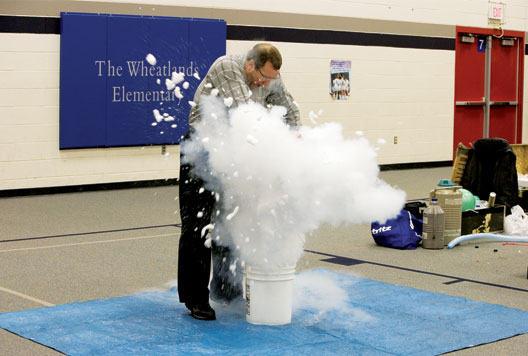 |
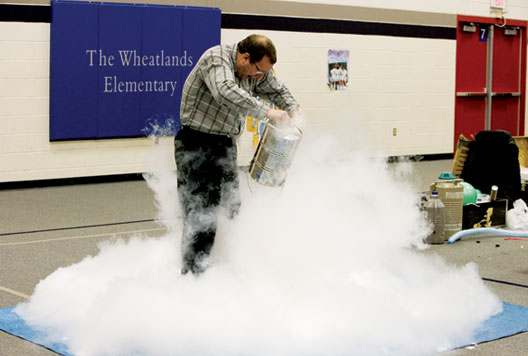 |
Initially, Fermilab management questioned the wisdom of diverting Zimmerman from a full day of work at the laboratory, where his projects require a mix of physics, computer programming, and mechanical engineering skills. Now management views his show as educational outreach, a vital part of running a government-funded physics laboratory in a heavily-populated area in tight economic times. The two-hour show connects everyday citizens with a complex scientific field where jargon often stands in the way of easy understanding.
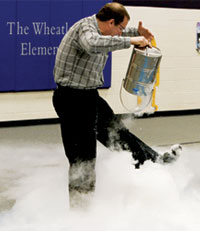 |
I feel it is the responsibility of people who work in science to do things like this because that is the only way people know what we do, Zimmerman says. Cryogenics provides an easy entry point. About anybody can understand hot and cold. And there are lots of things you can donot quite limitless, but close.
Zimmerman consistently adds new components to his show, but staple crowd-pleasers include mixing soap with nitrogen to create geysers of bubbles, using compressed gas to shoot confetti or rubber balls, shattering roses, and using a frozen banana to pound frozen rubber tubing through wood. Sometimes he accidentally breaks off the fingers of his safety glove as it emerges from a tank of nitrogen.
I have had girls in the front row scream their heads off, like I just maimed myself, he says with a slight smile.
Gasps and giggles aside, the show teaches the basics of gases, liquids, and solids and the cryogenics used to run particle accelerators at Fermilab. Zimmerman brings the complicated, mammoth machines down to Earth by comparing them to everyday objects such as the television, which is a type of particle accelerator.
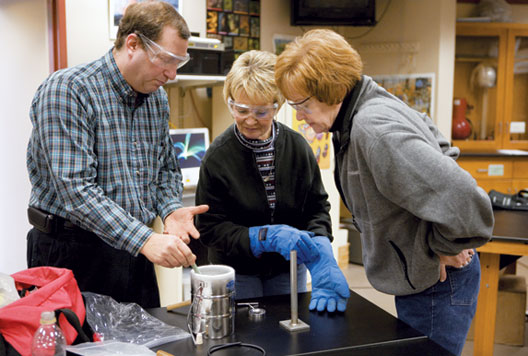 |
Such basic lessons come in handy for a nation whose average 10th grade science literacy scores lag behind 16 of 30 of the worlds richest countries, according to the latest Program for International Student Assessment. The science demonstrations help Fermilab. They help science, Zimmerman says. Because now people see that science isnt so boring. It isnt so bad. I have run into people who remember seeing the show as a child, and then used the stuff they learned when cryogenics came up in their college class. One man told me the show encouraged him to study science in college.
Even in a media-saturated, short-attention-span society, the show keeps drawing new generations of fans. In 2001, during a break at a Snowmass conference in Colorado, Zimmerman performed his Mr. Freeze show for a nearby science day camp. Days later, when exiting a local movie theater, Zimmerman was confronted by a six-year-old girl yelling, Mr. Freeze! She had seen the show, and when he quizzed her on the science facts behind the explosions, she remembered it all.
In February, when Naperville, Illinois-based Brownie Troop 371 wanted to tear down stereotypes about science that limit female participation, they asked Mr. Freeze to perform. According to the National Science Foundation, women account for 20 percent or fewer of postdoctoral students in science, engineering, mathematics, and physical sciences.
Its an exciting opportunity for our girls and our guests, and we hope it will further spark their interest in math and science, says parent Sue Grove.
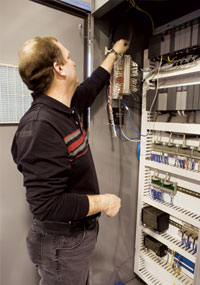 |
Zimmerman may perform up to six shows back-to-back in a day. At 4 oclock, Im really burnt out, he says. It is not just the talking; it is the concentration: Did I do that for this show? What were their questions?
But after a good nights sleep, Zimmerman is ready to return to Fermilab as just himself, a sort of physics jack-of-all-trades. He helped build the system to map the magnetic interior of the CMS detector at CERN, the European particle physics lab on the French-Swiss border, and maintains the extruder at Fermilab that produces plastic scintillator pieces for distribution worldwide; theyre used to detect passing subatomic particles. Zimmerman also created a high-speed pneumatic pressure system for COUPP, a modern bubble-chamber experiment, and helped upgrade the zip track, a 3D robotic system to map magnetic fields.
I like everything I do, Zimmerman says. But I get really excited about being Mr. Freeze. I love carrying on that legacy and seeing what I can add to make the show better.
Text: Tona Kunz
Photos: Cindy Arnold and Reidar Hahn
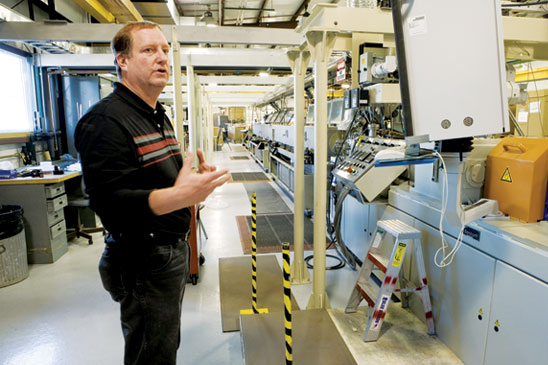 |
Click here to download the pdf version of this article.




